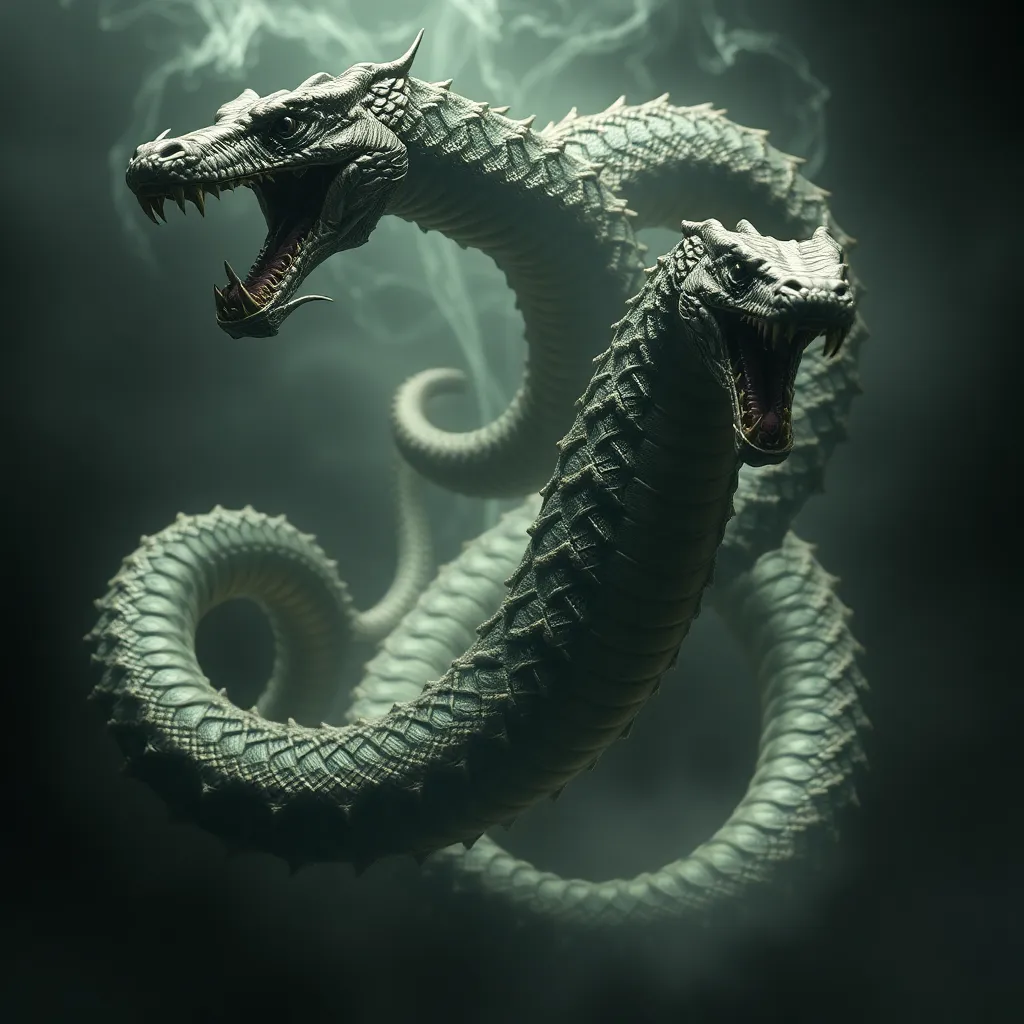The Hydra and the Serpent: Unveiling the Connection between Mythological Monsters
I. Introduction
Mythological monsters have captivated human imagination across various cultures throughout history. These creatures often embody the fears, challenges, and moral lessons of the societies that created them. Among these, the Hydra and the Serpent stand out as significant figures with deep-rooted connections to human experience and mythology. This article aims to explore the links between these two fascinating monsters, delving into their origins, characteristics, and the thematic connections they embody.
II. The Hydra: Origins and Characteristics
The Hydra is a multi-headed serpent-like monster from Greek mythology, known primarily for its role in the myth of Heracles. Originating from the swamps of Lerna, the Hydra was said to have numerous heads; when one was cut off, two would grow back in its place. This regenerative ability made it a formidable opponent.
Symbolically, the Hydra represents the chaos and challenges of life, particularly the idea that some problems seem to multiply when confronted directly. It embodies the theme of struggle against overwhelming odds, reflecting humanity’s battle against adversity.
One of the most notable myths involving the Hydra is Heracles’ second labor, where he was tasked with slaying the beast. With the help of his nephew Iolaus, who cauterized the necks to prevent regeneration, Heracles ultimately triumphed, signifying the victory of human ingenuity and strength over seemingly insurmountable challenges.
III. The Serpent in Mythology
Serpentine figures appear across a myriad of cultures, each with unique interpretations and significances. In many traditions, serpents are dualistic symbols of creation and destruction. For instance, in the Bible, the serpent represents temptation and sin in the story of Adam and Eve, while in Hindu mythology, the Nagas are revered as divine beings associated with water and fertility.
Key myths featuring serpents include:
- The biblical serpent that tempted Eve, leading to humanity’s fall from grace.
- The Nagas in Hindu tales, embodying both protective and destructive qualities.
- The Ouroboros, an ancient symbol depicting a serpent eating its own tail, representing the cycle of life, death, and rebirth.
Through these narratives, serpents are often portrayed as complex figures that challenge human morality while also embodying the potential for transformation and renewal.
IV. Comparative Analysis: Physical Attributes and Abilities
When comparing the Hydra and various serpents, several attributes stand out:
- Physical Descriptions: The Hydra is characterized by its multiple heads and scaly body, representing a monstrous form of chaos. In contrast, serpents vary widely in appearance, from the sleek and deadly cobra to the majestic dragon, each reflecting different cultural significances.
- Abilities and Traits: The Hydra’s most notable ability is its regeneration, while serpents often symbolize wisdom, transformation, and sometimes cunning. These traits highlight the contrasts between brute force and intellectual prowess.
These physical and symbolic attributes reflect cultural values and fears. The Hydra’s regeneration can symbolize the nature of problems in life that seem to multiply, while serpents often represent knowledge and the duality of existence.
V. Thematic Connections: Life, Death, and Rebirth
The themes of life, death, and rebirth are central to the narratives of both the Hydra and serpents. The Hydra, with its regenerative abilities, embodies the struggle against mortality and the cyclical nature of life. Each time Heracles cuts off a head, it signifies not just a physical battle, but a philosophical one: how do we confront the seemingly endless challenges of existence?
In contrast, serpents often symbolize the continuum of life and the potential for transformation. Their ability to shed skin is a powerful metaphor for renewal and rebirth. Both creatures encourage reflection on mortality, immortality, and the human condition.
VI. The Role of the Hero: Confronting the Hydra and the Serpent
Heroes in myth often confront monsters as a rite of passage. In Greek mythology, Heracles faces the Hydra as a test of strength and ingenuity. Similarly, biblical figures, such as Moses, encounter serpents, which challenge their faith and resolve.
The hero’s journey typically involves:
- Recognition of the Challenge: Understanding the nature of the monster.
- Preparation: Gathering allies and resources to confront the threat.
- Confrontation: Engaging the monster in a battle that often symbolizes inner struggles.
- Triumph: Overcoming the monster, which often leads to personal growth and enlightenment.
These monsters, in many ways, are representations of the inner demons faced by heroes, illustrating the universal struggles within human existence.
VII. Cultural Interpretations and Modern Relevance
The Hydra and serpents have had a lasting influence on modern media and literature, appearing in films, books, and art as symbols of struggle, temptation, and transformation. They continue to resonate with audiences, serving as metaphors for contemporary challenges.
In psychology, these mythological figures are often interpreted as archetypes representing the shadow self and the inner conflicts faced by individuals. The Hydra symbolizes the overwhelming nature of our fears and challenges, while the serpent can represent the temptation to avoid confrontation or the potential for change.
Both creatures invite reflection on the eternal nature of myth and its relevance in understanding human psychology and societal issues.
VIII. Conclusion
In summary, the Hydra and the Serpent are not just monsters of myth; they embody profound connections to human experience, exploring themes of life, death, and transformation. Their enduring nature in mythology highlights the importance of understanding these figures in the context of human culture and mythology.
As we continue to confront our own Hydras and serpents in life, these mythological monsters remind us of the complexities of existence and the universal struggle for understanding and overcoming challenges.




